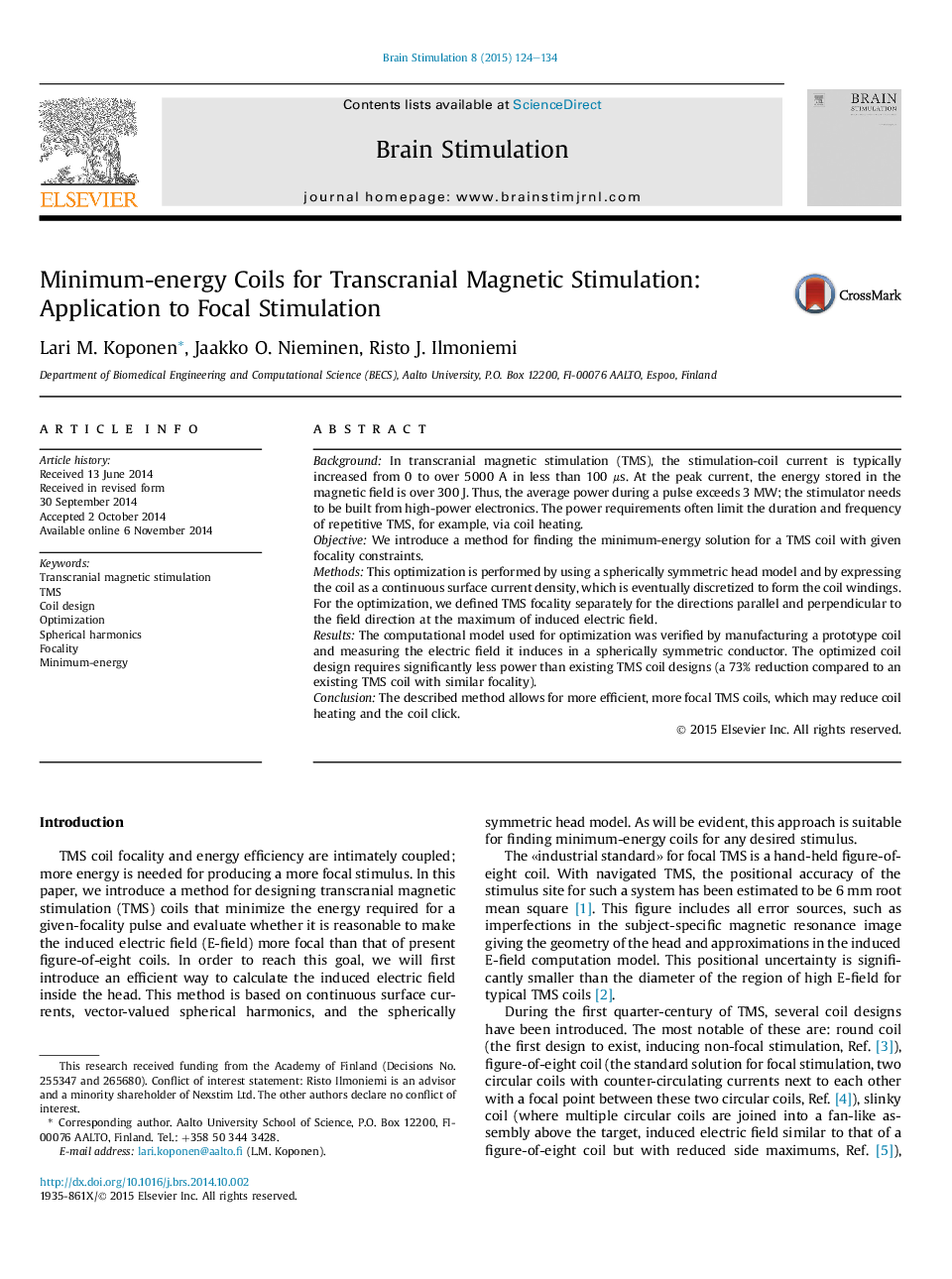| Article ID | Journal | Published Year | Pages | File Type |
|---|---|---|---|---|
| 3038755 | Brain Stimulation | 2015 | 11 Pages |
BackgroundIn transcranial magnetic stimulation (TMS), the stimulation-coil current is typically increased from 0 to over 5000 A in less than 100 μs. At the peak current, the energy stored in the magnetic field is over 300 J. Thus, the average power during a pulse exceeds 3 MW; the stimulator needs to be built from high-power electronics. The power requirements often limit the duration and frequency of repetitive TMS, for example, via coil heating.ObjectiveWe introduce a method for finding the minimum-energy solution for a TMS coil with given focality constraints.MethodsThis optimization is performed by using a spherically symmetric head model and by expressing the coil as a continuous surface current density, which is eventually discretized to form the coil windings. For the optimization, we defined TMS focality separately for the directions parallel and perpendicular to the field direction at the maximum of induced electric field.ResultsThe computational model used for optimization was verified by manufacturing a prototype coil and measuring the electric field it induces in a spherically symmetric conductor. The optimized coil design requires significantly less power than existing TMS coil designs (a 73% reduction compared to an existing TMS coil with similar focality).ConclusionThe described method allows for more efficient, more focal TMS coils, which may reduce coil heating and the coil click.
